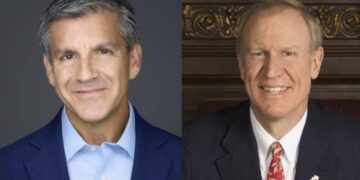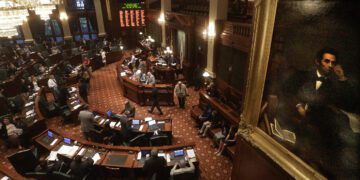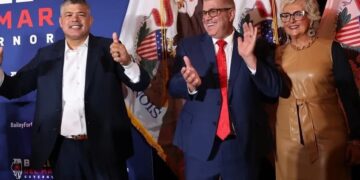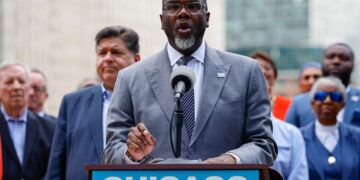People worry about rising inequality when inequality is actually falling.But those are also the times when wages are falling, too, observes Michael Strain:
The Harris Poll has asked respondents for several decades whether they “feel the rich get richer while the poor get poorer.” In 1980, 76% of respondents felt that way. By 1990, 82% agreed with the sentiment. But by 2000, the share of respondents who agreed dropped significantly, to 69%. That decrease of 13 percentage points during the 1990s amounts to a 16% drop, and a 9% decline over both decades.
A Gallup poll shows similar movement. In 1990, 66% of respondents to the poll — which has data for many fewer years than Harris — reported feeling “that the distribution of money and wealth” in the U.S. “should be more evenly distributed among a larger percentage of the people.” In 2000, that had dropped by 10 percentage points, to 56%.
At the same time that people felt inequality was decreasing during those years, it was actually growing considerably. Using a standard social scientific measure of income inequality, the Gini coefficient, calculated on income after federal taxes and transfer payments — a measure of income that attempts to capture the flow of resources available to households for spending and saving — the Congressional Budget Office finds a 14% increase in the rich-poor gap during the 1980s and an 8% increase during the 1990s.
Inequality continued to widen, but in the years since the 2007 global recession began, when concern about inequality exploded as a dominant political issue, the income gap has narrowed. […]
What could explain this? One candidate: Wage growth may be a much more important factor than the actual size of the rich-poor gap in determining how the public feels about inequality. When people express concern about inequality, their concern may be driven less by the income gap itself and more by their sense of how rapidly wages are growing, including their own.
The data suggest there may be something to this story. From 1980 to 1990, the inflation-adjusted average hourly wage of typical workers decreased by 3%, and concern about inequality ticked up. But over the 1990s, average pay increased by 11 percent, and concern about inequality significantly decreased as the rich-poor gap widened.
Michael R. Strain, “Maybe Inequality Isn’t What’s Making People Mad,” Bloomberg
Facebook has greatly reduced the distribution of our stories in our readers' newsfeeds and is instead promoting mainstream media sources. When you share to your friends, however, you greatly help distribute our content. Please take a moment and consider sharing this article with your friends and family. Thank you.–







